Research Interests
The development and application of physical methods such as magnetic circular dichroism (MCD) and magnetic linear dichroism (MLD) to the study of the electronic properties of metalloproteins and model complexes. The analytical use of these techniques, together with electron paramagnetic resonance (EPR) spectroscopy, in studies of respiratory complexes in membrane fragments and intact mitochondria is a growing area of interest.

Dr. Pearce & Yang |
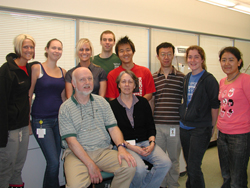
Pearce/Peterson Lab Group |
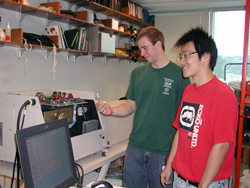
Andrew & Yang |
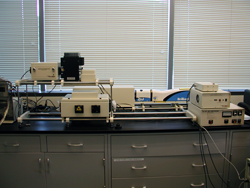 |
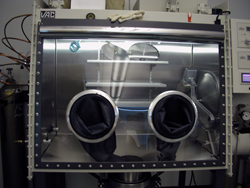 |
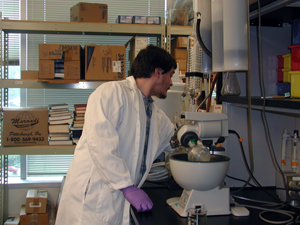
Oscar conducting an experiment |
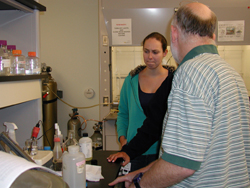
Megan & Dr. Peterson |
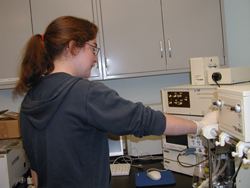
Sarah working on the laser |
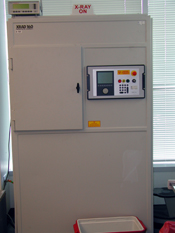 |
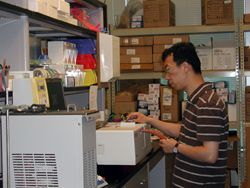
Quan doing an experiment |
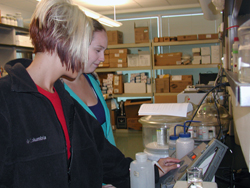
Leah & Megan |
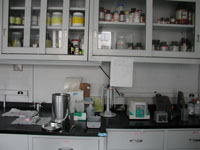 |
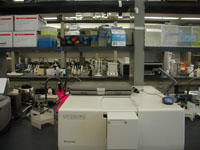 |
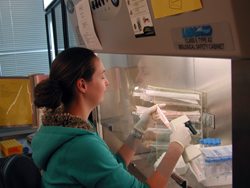
Megan checking on an experiment |
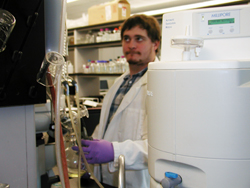
Oscar progressing on his experiment |
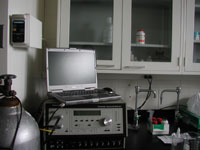 |
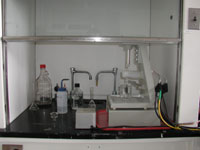 |
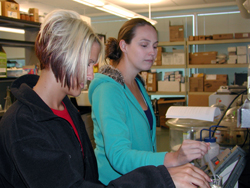
Leah & Megan checking the status of their experiment |
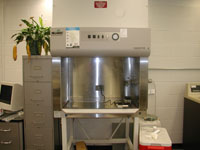 |
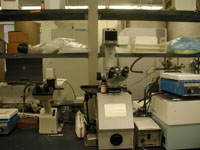 |
Metalloproteins function in a variety of transport and storage pathways, in cellular electron-transfer and proton-translocation reactions, and about one third to one half of all well-characterized biological catalysts are metalloenzymes. The particular metal ion and at least its first coordination sphere are crucial to the type of activity displayed. Consequently, the application of techniques designed to elucidate the chemical and physical properties of metal sites in proteins provides information of direct relevance to function, including mechanisms of enzyme action.
In order to take full advantage of the much improved sensitivity of our spectroscopic techniques at ultralow temperatures, we perform most of our experiments under cryogenic conditions. This approach has the added advantage that important derivatives can be studied at leisure, over a period of several days if necessary, once they have been frozen in liquid helium. We obtain the majority of interesting samples from outside collaborators, both in this country and overseas. We try to meet with these individuals on a fairly regular basis, hosting them here and visiting their institutions. However, for various practical reasons, we find it necessary to either prepare, or at least partly purify many samples ourselves. This can sometimes involve obtaining tissue from exotic species, like marine molluscs and sharks. In addition to the MCD and MLD experiments, other data concerning the same samples, such as EPR and Mössbauer (g -ray resonance) spectra, are routinely collected in the laboratories of our immediate colleagues.
A number of inter-related questions may be addressed by the joint application of several biophysical methods, including the following. 1) Are there any metal centers in a given protein and, if so, how many and what is there nature? This question is not nearly so trivial as it might at first appear, since detection of catalytically important levels of some metal ions can be difficult. Jack bean urease was known in crystalline form for almost fifty years before it was shown to be a metalloenzyme containing twelve Ni(II) ions per hexamer. 2) Do the observed metal centers bind substrate and/or undergo changes in oxidation state prior to release of product? 3) Does any given metal center exhibit multiple forms dependent upon protein conformational changes? 4) Are interactions between metal centers important in the mechanism of enzyme action? While the answer to the second question can often be correctly inferred by inspection of the data alone, addressing the last two usually requires some detailed analysis. Therefore, the development and testing of suitable theoretical models to explain the spectroscopic observations is also a key component of the overall research effort. |
